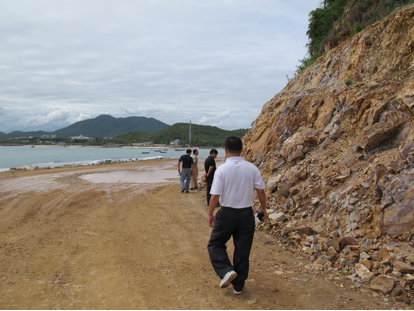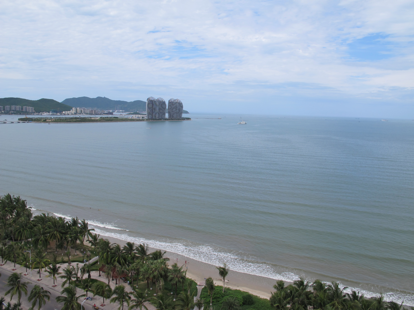Yajun Xu is a geologist and an associate professor at China University of Geosciences in Wuhan. His current research focuses mainly on the location of the South China Craton in Gondwana Supercontinent and Early Paleozoic Orogenesis in South China.
Hainan Island, the second largest island in China, is a continental-type island, located off the southern coast of South China and separated from the mainland by the Qiongzhou Strait. Although it just covers the continental area of ca. 35,000 Km2, geologists think it consists of at least two tectonostratigraphic terranes (Metcalfe, 1996), but the nature of the boundaries of these terranes is still controversial. It has been documented in Chinese literature that the Early Palezoic successions just distributed around Sanya City at the southern end of island are significantly different from the equivalent successions in the northern part, thus it could represent an exotic fragment. In order to constrain its origin, we have been conducting fieldwork in the Sanya region.
Sanya has the most beautiful seaview in China and it has been considered as heaven for tourists, but is really nightmare for geologists due to poor outcrop of rocks in the tropical humid environment. Fortunately, we found some Cambrian quartz sandstones in a small outcrop along the new-cut road. These rocks have been the key to our understanding origin of the Sanya block.

Outcrop of the Cambrian quartz sandstones along the new-cut road (close to the South China Sea on the right side).
Age distribution and Hf isotope of detrital zircons preserved in these rocks are completely different from those of the equivalent succession in the mainland of South China, but are similar to those of the Northampton Complex along the western margin of Australia. This important finding led us to propose that Sanya could represent a fragment of Western Australia (Xu et al., 2014), where I visited in 2009 and stayed for three months.
- Metcalfe I. 1996. Gondwanaland dispersion, Asian accretion and evolution of eastern Tethys. Australian Journal of Earth Sciences, 43, 605-623.
- Yajun Xu, Peter A. Cawood, Yuansheng Du, Zengqiu Zhong, Nigel C. Hughes, 2014. Terminal suturing of Gondwana along the southern margin of South China Craton: Evidence from detrital zircon U-Pb ages and Hf isotopes in ambrian and Ordovician strata, Hainan Island. Tectonics Tectonics, 33, doi:10.1002/2014TC003748.
![]() This work is licensed under a Creative Commons Attribution-NonCommercial-ShareAlike 4.0 International License.
This work is licensed under a Creative Commons Attribution-NonCommercial-ShareAlike 4.0 International License.


